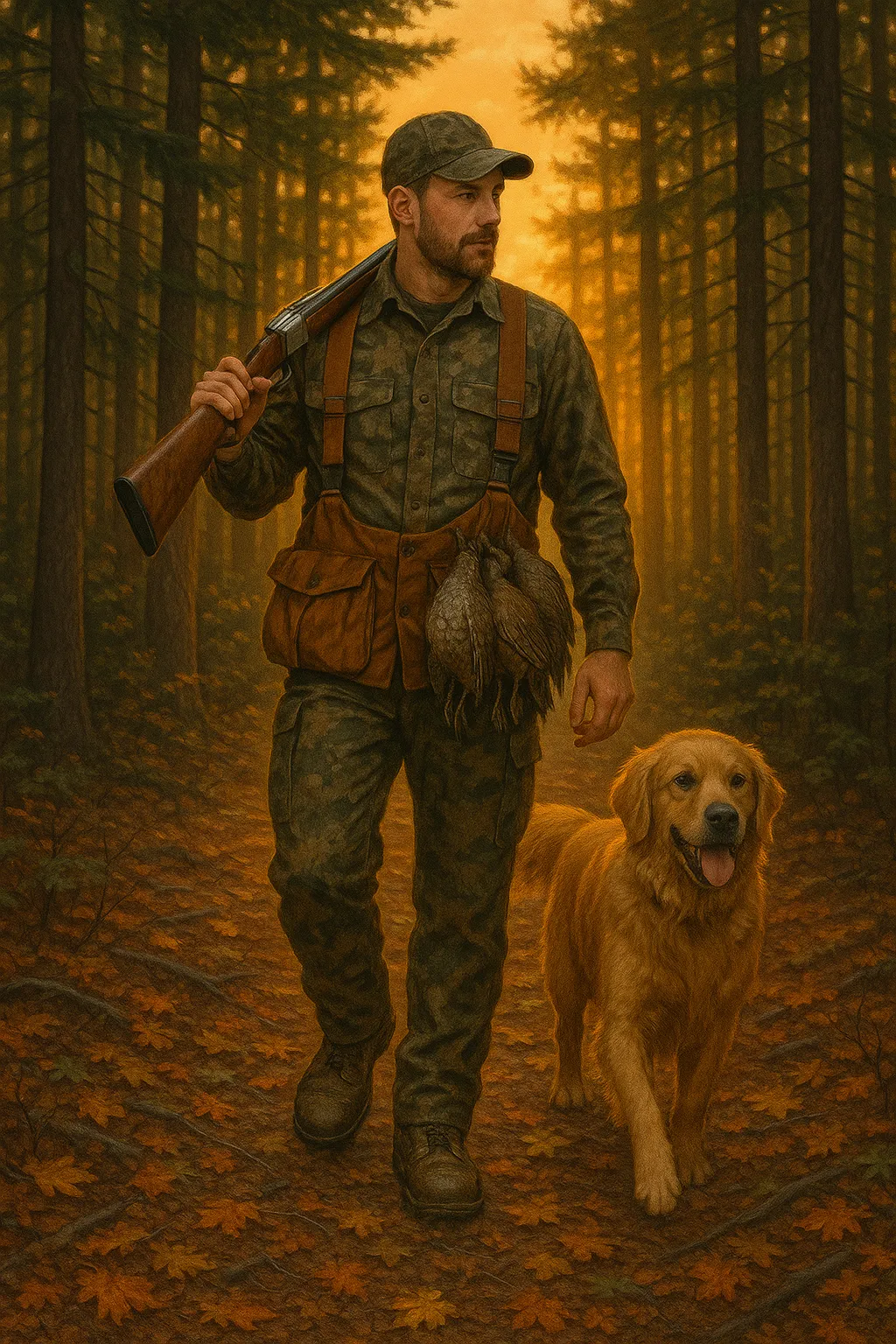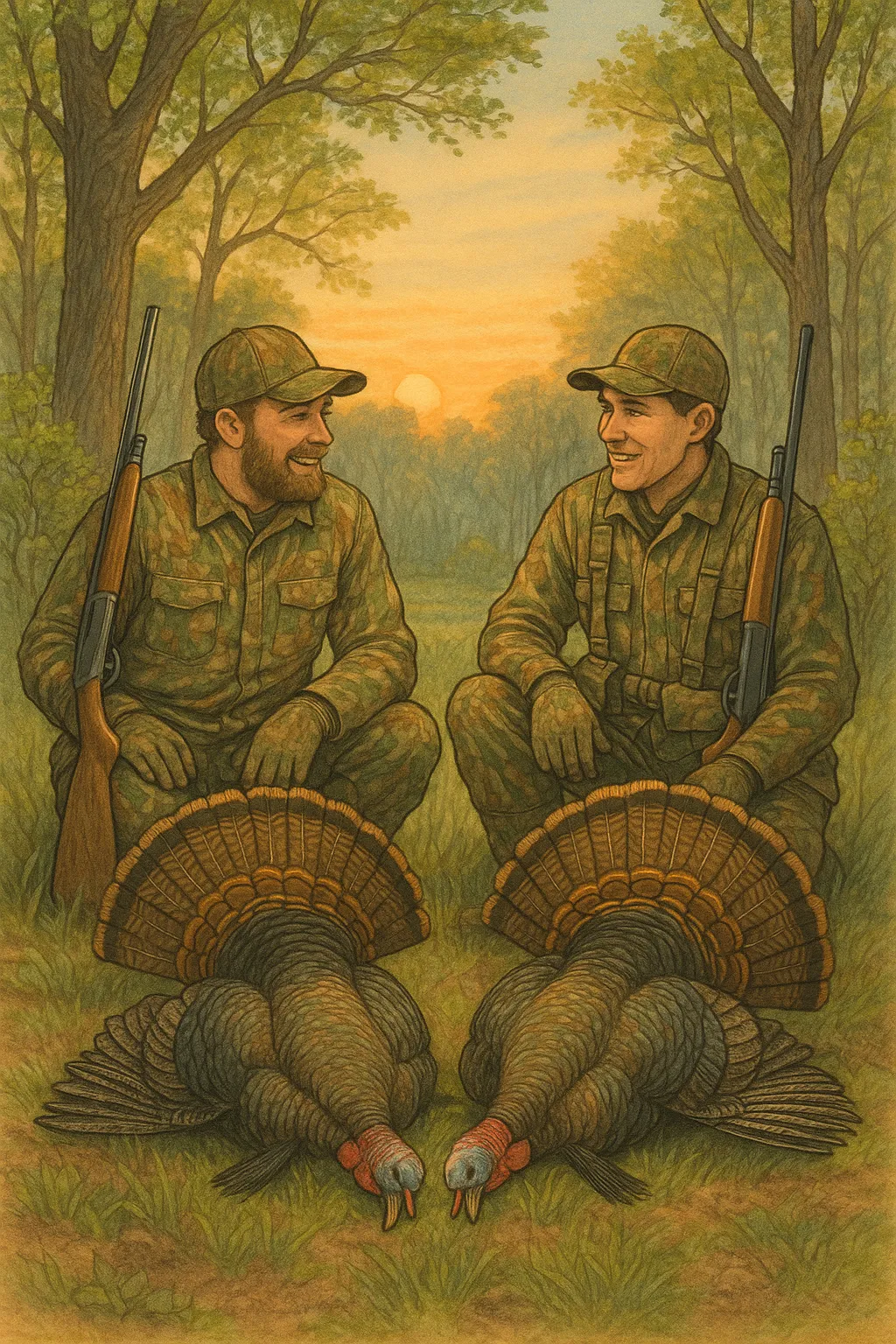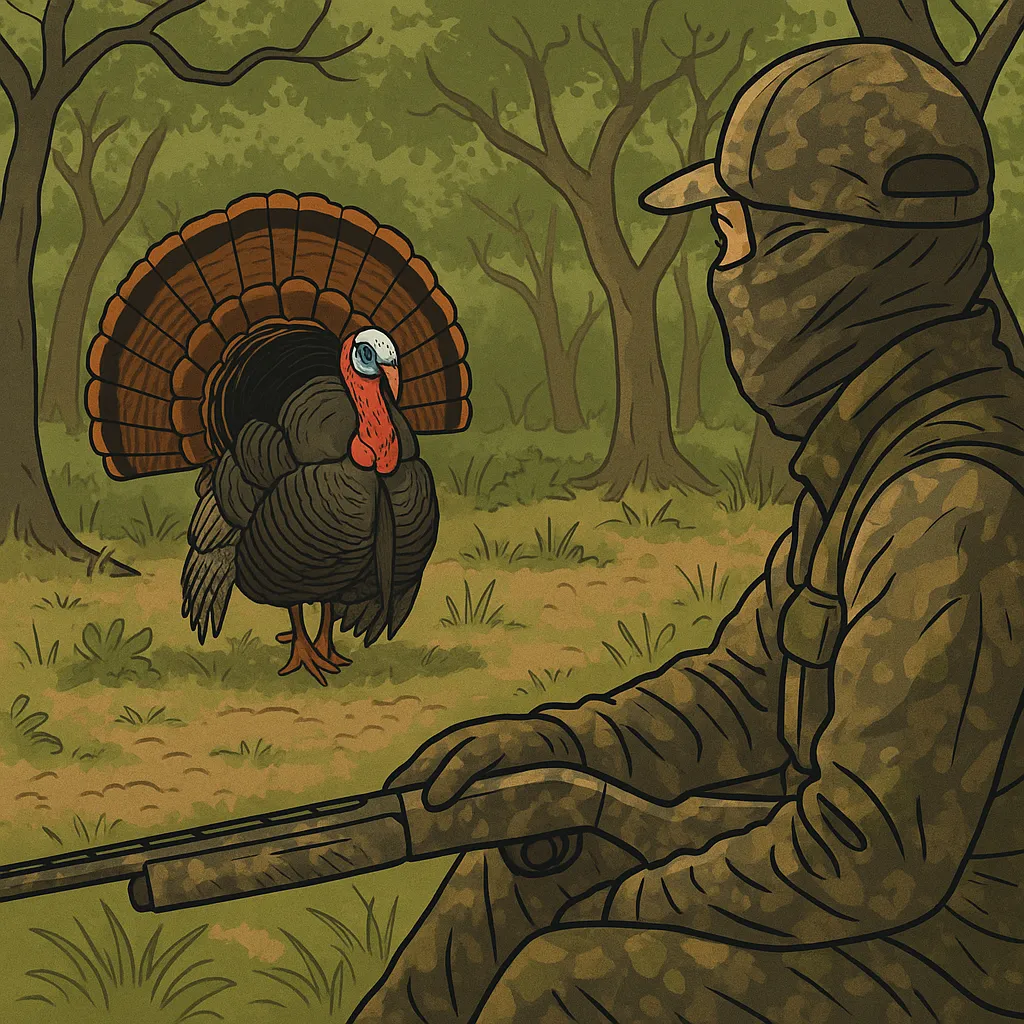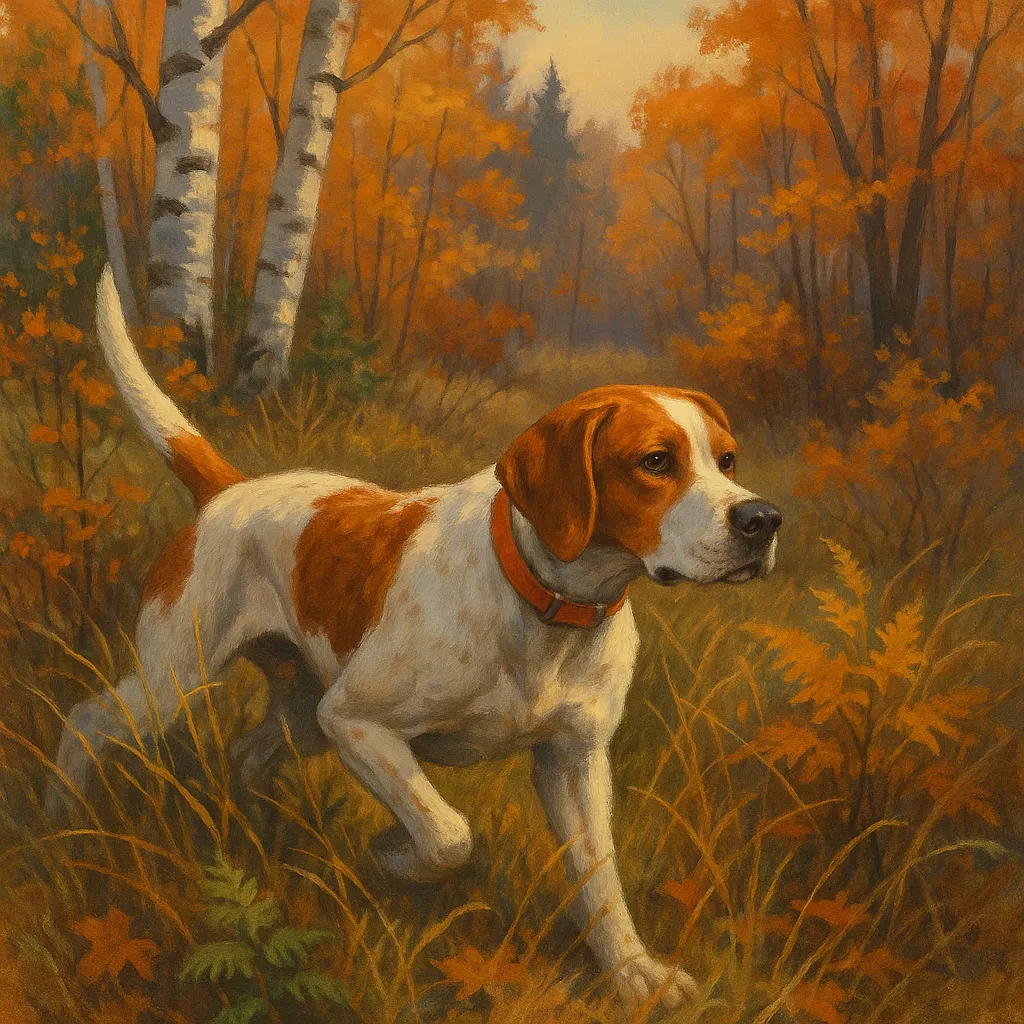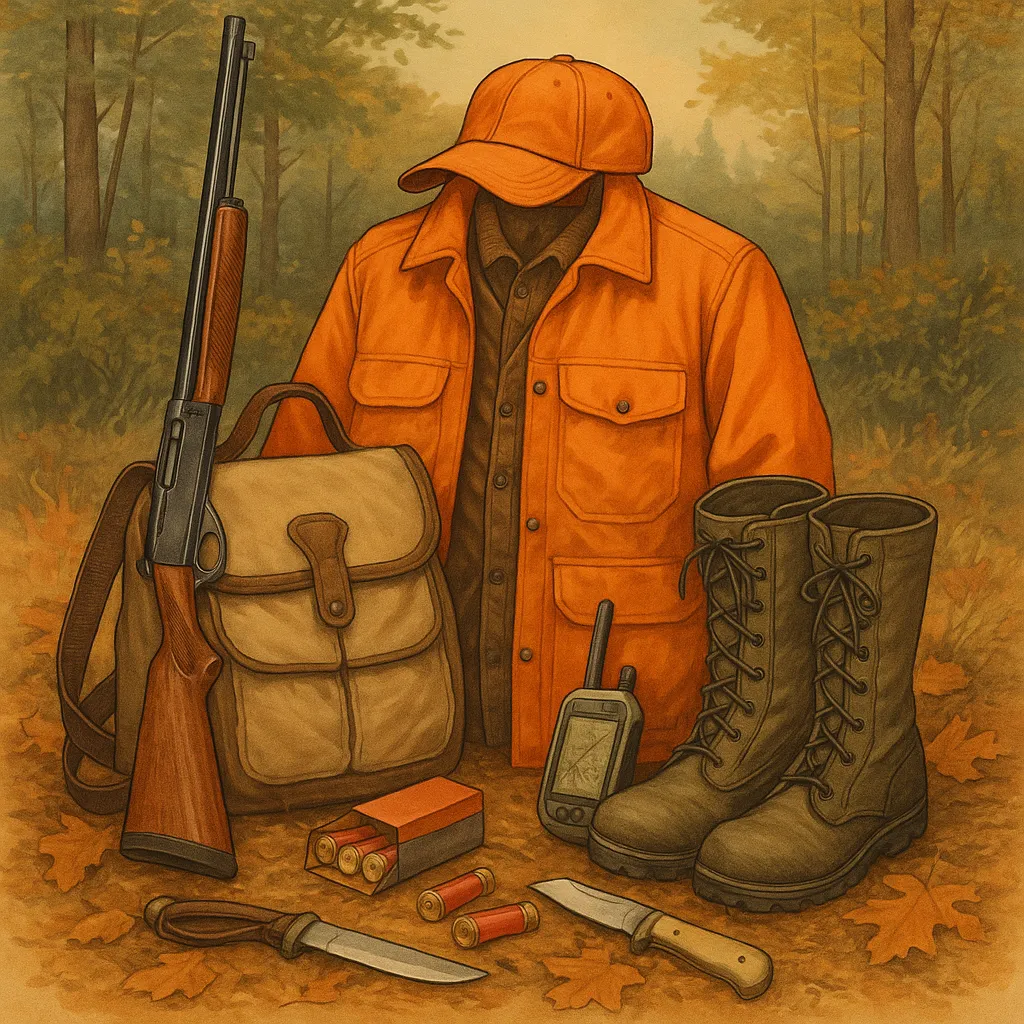
Essential Gear for Bird Hunting in Michigan
In Michigan’s bird country, success doesn’t just come from a quick trigger—it comes from preparation. From the thick alder tangles of the Upper Peninsula to frozen cornfields in late November, your gear must handle weather swings, heavy use, and fast action. Whether you’re a seasoned wingshooter or building your first kit, here’s what you need in the blind, field, or brush to hunt Michigan birds the right way.
🎯 Why Gear Matters
-
✔️ Comfort = longer hunts in tough terrain
-
✔️ Function = quick access to shells, calls, hydration
-
✔️ Safety = visibility, protection, and survival in cold, remote areas
-
✔️ Efficiency = more bird contacts, cleaner retrieves, and fewer missed shots
🧢 Core Essentials (Every Bird Hunter Needs)
| Item | Why It’s Critical |
|---|---|
| Blaze Orange Hat & Vest | Required for upland (grouse, pheasant) in MI |
| Shell Carrier / Game Vest | Keeps shells, birds, and water accessible |
| Waterproof Boots | For marshes, dew-soaked grass, or snow |
| Field Knife or Multi-tool | Cleaning birds, cutting brush, or emergencies |
| Hydration Source | Collapsible bottle or hydration pack |
| Map/GPS (onX, Garmin) | Navigate safely and mark productive spots |
🪶 Upland Hunting Gear (Grouse, Woodcock, Pheasant)
-
Brush Pants or Chaps – Protect from thorns and briars
-
Lightweight Shotgun (20-ga) – Quick handling for close flushes
-
Dog Bell or Beeper Collar – Keep track of your pointer or flusher
-
Upland Boots – Breathable and flexible for miles of hiking
-
Shell Pouch or Game Belt – Lightweight and fast-access
Pro Tip: A blaze orange hat is mandatory in all upland zones—no exceptions.
🦆 Waterfowl Gear (Ducks, Geese, Divers)
-
Chest Waders (Neoprene or Breathable) – For marshes and layout blinds
-
Waterproof Shotgun (12-ga) – Handles wet, icy conditions
-
Duck/Goose Calls – Single reed for mallards, honker calls for geese
-
Blind Bag – Holds shells, calls, gloves, snacks, and spare layers
-
Headlamp – For early morning setup in total darkness
-
Motion Decoys / Jerk Rig – Adds realism when birds get wary
-
Layout or A-frame Blind Gear – Keeps you concealed and dry
Pro Tip: Bring an extra pair of gloves—wet hands ruin cold-weather hunts fast.
🧤 Cold Weather Add-ons (Late Season Necessities)
| Item | Purpose |
|---|---|
| Merino Wool Base Layers | Insulation + breathability |
| Insulated Shell Jacket | Windproof and water-resistant |
| Neck Gaiter / Balaclava | Prevents heat loss |
| Hand Muff or Heated Gloves | Keeps hands working in icy blinds |
| Toe & Hand Warmers | Critical for 4+ hour sits in layout blinds |
🐕 Dog Gear (If You’re Running a Bird Dog)
-
E-Collar or GPS Collar (Garmin Alpha, Dogtra)
-
Dog Vest (especially for marsh or icy covers)
-
Portable water bottle + collapsible bowl
-
First-aid kit (for paw cuts, seed heads, barbed wire)
-
Dog boots (for frozen or rough ground)
Pro Tip: Always carry a lead and whistle—even in remote areas.
🧰 Optional But Useful Gear
-
Decoy Bag or Slotted Carrier
-
Rangefinder (for geese or divers)
-
Waterproof seat pad or stool
-
Shooting gloves with trigger finger cutout
-
Hand towel (wet days or bird cleaning)
-
Phone dry bag & external battery
-
Thermos (coffee, soup, or broth)
✅ Field-Proven Packing Checklist
| Item | Upland | Waterfowl | Late Season |
|---|---|---|---|
| Blaze Orange Hat/Vest | ✅ | 🔲 | ✅ |
| Chest Waders | 🔲 | ✅ | ✅ |
| Warm Gloves | ✅ | ✅ | ✅ |
| Dog Gear | ✅ | ✅ | ✅ |
| Handwarmers | 🔲 | ✅ | ✅ |
| Blind Bag | 🔲 | ✅ | ✅ |
| GPS or onX App | ✅ | ✅ | ✅ |
Conclusion: Gear for the Grind
Michigan bird hunting is as varied as it is rewarding—but it’s rarely easy. From early September teal flights to deep December snow on diver rafts, your gear needs to evolve with the hunt. With the right tools, you’ll stay comfortable, move efficiently, and make every flush, flock, and retrieve count.
“The birds test your shot—but the gear determines how long you stay in the game.”
Leave A Comment
Related Posts
Caring for Your Bird Hunting Gear and Equipment Bird hunting […]

